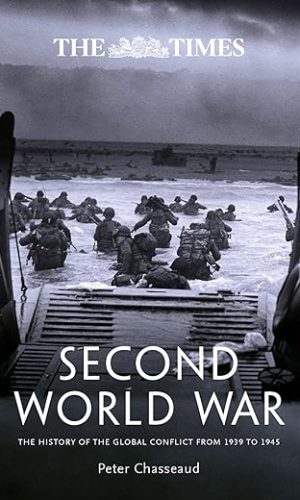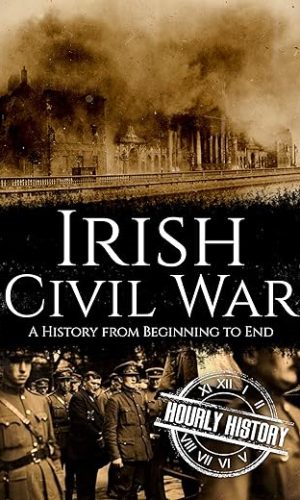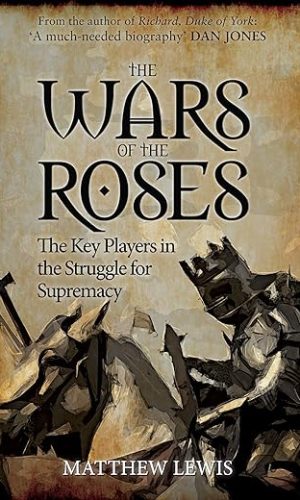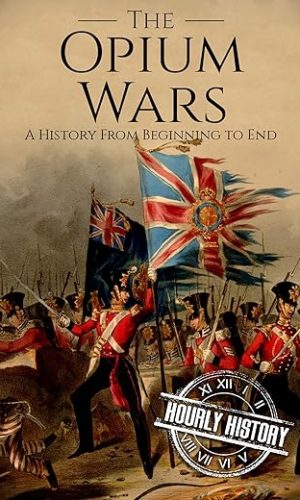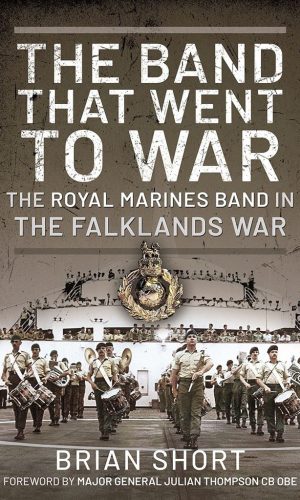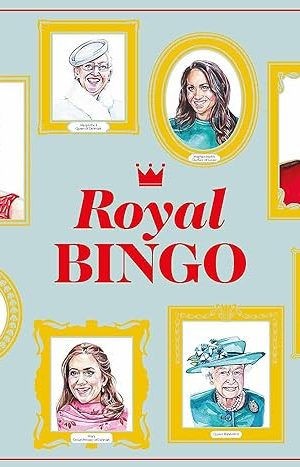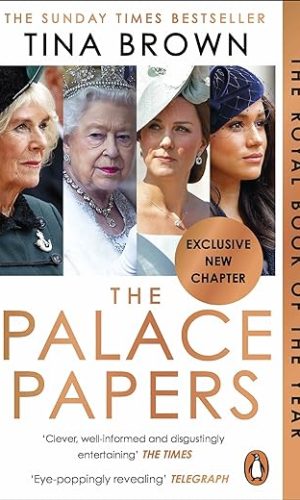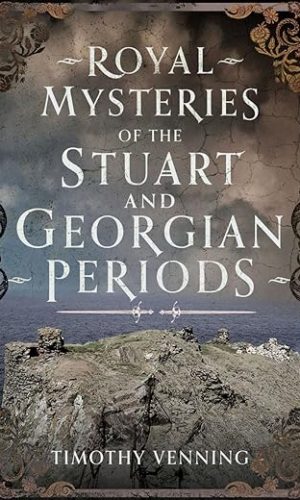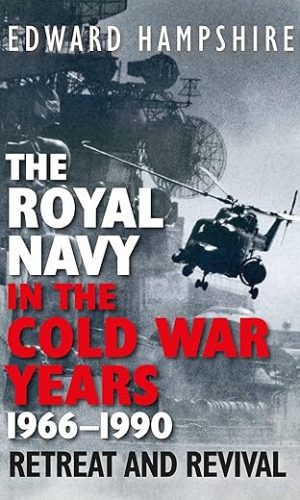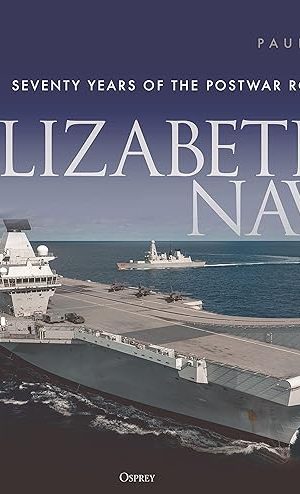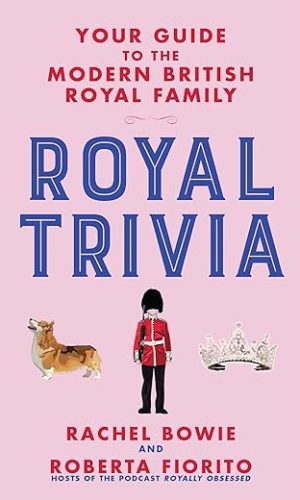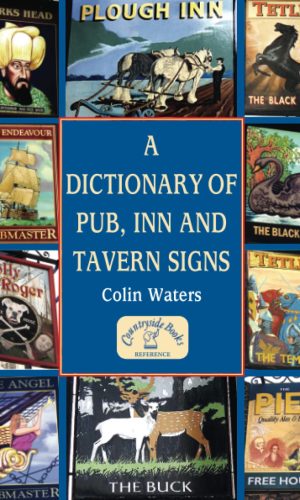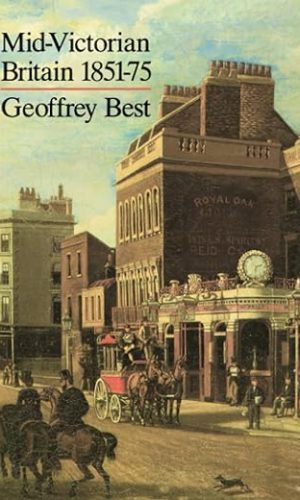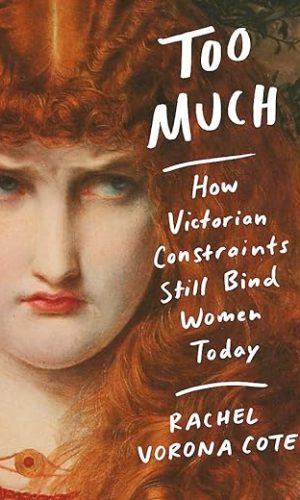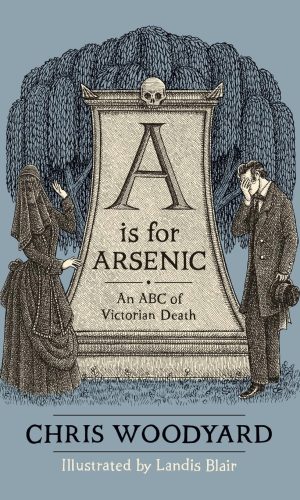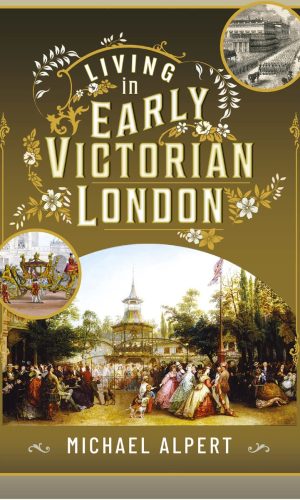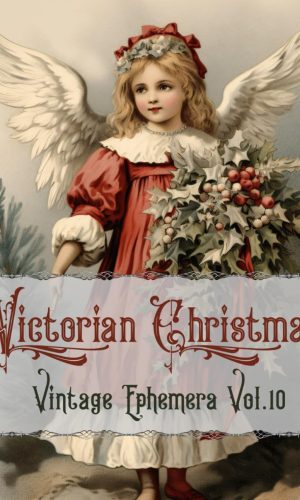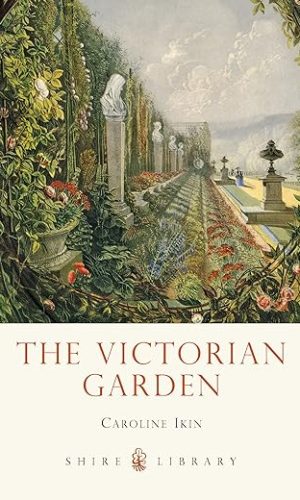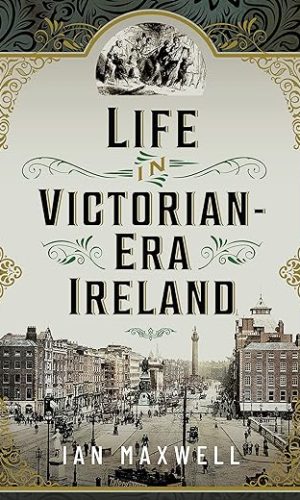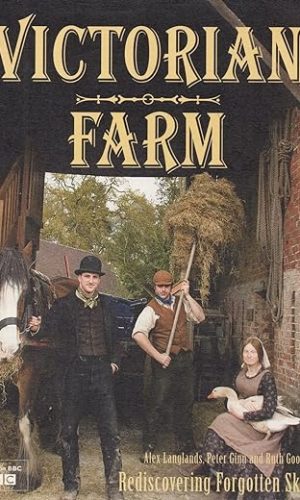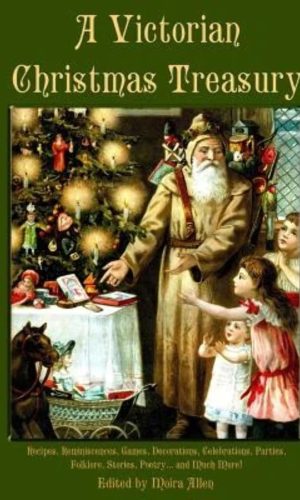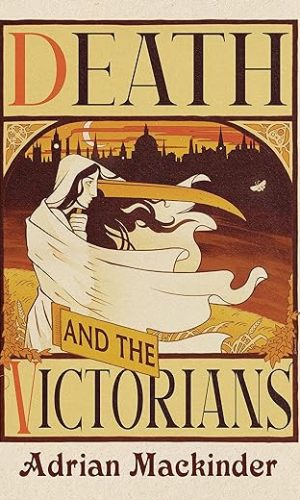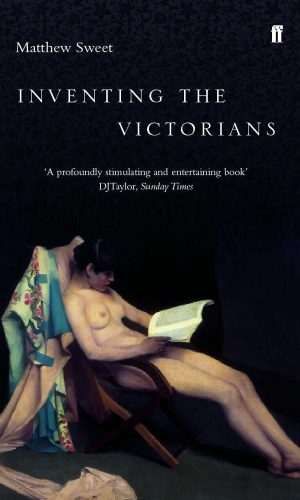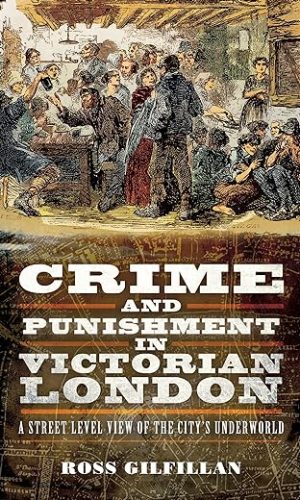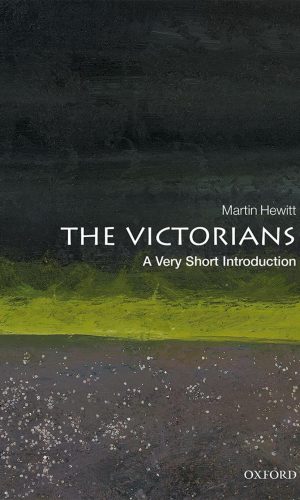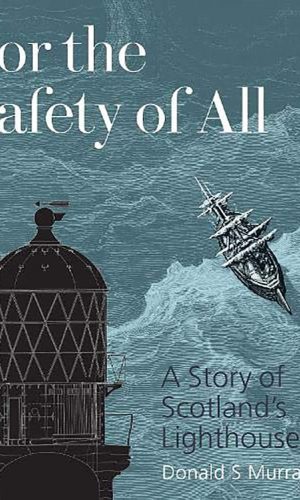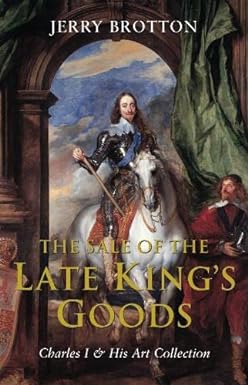Europe
-
A Nasty Little War: The West’s Fight to Reverse the Russian Revolution
‘A vivid and sparkling account, full of colour and dark drama’ The Observer
‘Chillingly original’ Max Hastings, ‘Pick of the Week’, The Times
‘Brilliantly depicts a disastrous failure’ Antony Beevor
‘Witty and elegant . . . Excellent background to today’s events’ Anne Applebaum
‘Britain’s most forgotten war, brilliantly remembered’ Simon Jenkins
‘Vivid and remarkably timely’ Martin Sixsmith
From the bestselling author of Borderland: A Journey Through the History of Ukraine
The extraordinary story of how the West tried to reverse the Russian Revolution.
In the closing months of the First World War, Britain, America, France and Japan sent arms and 180,000 soldiers to Russia, with the aim of tipping the balance in her post-revolutionary Civil War. From Central Asia to the Arctic and from Poland to the Pacific, they joined anti-Bolshevik forces in trying to overthrow the new men in the Kremlin, in an astonishingly ambitious military adventure known as the Intervention.
Fresh, in the case of the British, from the trenches, they found themselves in a mobile, multi-sided conflict as different as possible from the grim stasis of the Western Front. Criss-crossing the shattered Russian empire in trains, sleds and paddlesteamers, they bivouacked in snowbound cabins and Kirghiz yurts, torpedoed Red battleships from speedboats, improvised new currencies and the world’s first air-dropped chemical weapons, got caught up in mass retreats and a typhus epidemic, organised several coups and at least one assassination. Taking tea with warlords and princesses, they also turned a blind eye to their Russian allies’ numerous atrocities.
Two years later they left again, filing glumly back onto their troopships as port after port fell to the Red Army. Later, American veterans compared the humiliation to Vietnam, and the politicians and generals responsible preferred to trivialise or forget. Drawing on previously unused diaries, letters and memoirs, A Nasty Little War brings an episode with echoes down the century since vividly to life.
Read more
£19.00£23.80 -
The Times Second World War: The history of the global conflict from 1939 to 1945
The perfect gift for history fans.
Follow the conflict of World War 2 from 1939 to 1945 through a unique collection of historical maps, expert commentary and photographs. Published in association and including material from the archives of the Imperial War Museum, London.
Over 200 photographs and maps from the archives of The Imperial War Museum tell the story of how this global war was fought.
Descriptions of key historical events accompany the illustrations, giving a fascinating history of the war from an expert historian.
Key topics covered include
• 1939: Invasion of Poland
• 1940: German invasion of Low Countries & France
• 1940: Battle of Britain & German invasion threat
• Dec 1941: Pearl Harbor
• 1942: Turning points: Midway, Alamein, Stalingrad
• 1941-45: Barbarossa and the Eastern Front
• The War at Sea
• The advances to Jerusalem, Damascus and Baghdad
• The War in the Air
• 1944: Neptune & Overlord; D-Day & liberation of FranceRead more
£19.00£23.80 -
Irish Civil War: A History from Beginning to End (History of Ireland)
Discover the remarkable history of the Irish Civil War…
Free BONUS Inside!
The Irish War of Independence which ended in July 1921 led directly to the agreement of the Anglo-Irish Treaty, an agreement that provided Ireland with a measure of independence. The Irish Free State was created, and Ireland was granted a level of autonomy it had not enjoyed for more than one hundred years.
However, the treaty contained a clause which was to divide Ireland, literally and politically. The six counties in the north which formed Ulster were allowed to opt-out and to remain a part of the United Kingdom. The island of Ireland became two separate countries for the first time—The Irish Free State in the south and west and Northern Ireland in the north. This division caused bitterness among many Irish people who had fought for independence. Some even viewed the signing of the treaty and the creation of a separate Northern Ireland as a betrayal of all they had fought for. Others accepted that the treaty was not perfect but saw the creation of the Free State as an important first step on the road to complete independence for Ireland.
In late June 1922, growing animosity between Pro and Anti-Treaty factions erupted into armed conflict in the center of Dublin. For the next ten months, the Irish Free State was wracked by a bitter, bloody, and brutal civil war between those who sought to protect the new government and those who wished to destroy it. This is the story of the Irish Civil War, its origins, and its consequences.
Discover a plethora of topics such as
- The War of Independence and the Anglo-Irish Treaty
- The Attack on the Four Courts
- Civil War Breaks Out
- The Deaths of Arthur Griffith and Michael Collins
- Executions and Assassinations
- The End of the Civil War
- And much more!
So if you want a concise and informative book on the Irish Civil War, simply scroll up and click the “Buy now” button for instant access!
Read more
£1.90 -
The Wars of the Roses: The Key Players in the Struggle for Supremacy
In the second half of the fifteenth century, for over thirty years, civil war tore England apart. However, its roots were deeper and its thorns were felt for longer than this time frame suggests. The Wars of the Roses were not a coherent period of continual warfare. There were distinct episodes of conflict, interspersed with long periods of peace. But the struggles never really ceased. Motives changed, fortunes waxed and waned, the nature of kingship was weighed and measured and the mettle of some of England’s greatest families was put to the test. Matthew Lewis examines the people behind these events, exploring the personalities of the main players, their motives, successes and failures. He uncovers some of the lesser-known tales and personal stories often lost in the broad sweep of the Wars of the Roses, in a period of famously complex loyalties and shifting fortunes.Read more
£9.30£10.40 -
The Opium Wars: A History From Beginning to End (History of China)
Discover the remarkable history of the Opium Wars…
Free BONUS Inside!
Violent confrontation between armed groups over the supply of illegal narcotics is something we commonly associate with criminal gangs in modern cities, but in the mid-nineteenth century Great Britain went to war with Imperial China in order to continue to supply Chinese addicts with opium. The two wars which followed have become known as the Opium Wars, and they led to the utter defeat of China, the establishment of a British colony in Hong Kong, and the continuation of a narcotics trade that was worth millions of pounds each year to the British.
The Opium Wars exposed the weaknesses of the Chinese Qing dynasty in terms of its military abilities and internal corruption. They also exposed divisions in Victorian Britain where people were beginning to question the morality of going to war to support an illegal narcotics trade which caused misery and death for millions of Chinese. In the end, the British were able to overcome their reservations and prosecuted these two wars with great success. British casualties were small and the gains enormous—the British opium trade to China would continue for more than fifty years after the end of the Second Opium War.
For the Chinese Qing dynasty, the Opium Wars marked the beginning of the end. Imperial China had endured for two thousand years, but within fifty years of the humiliations of the Opium Wars, a revolution overthrew the imperial court and turned China into a republic. Although they are little remembered today, the Opium Wars changed the face not just of China but also of the whole of Asia. This is the story of those wars.
Discover a plethora of topics such as
- The Joy Plant
- Outbreak of the First Opium War
- British Superiority and the Devil Ship
- The Treaty of Nanking: First of the Unequal Treaties
- The Inevitable Second Opium War
- The Fall of Beijing
- And much more!
So if you want a concise and informative book on the Opium Wars, simply scroll up and click the “Buy now” button for instant access!
Read more
£1.90 -
Kings Queens Bones & Bastards: Who’s Who in the English Monarchy from Egbert to Elizabeth II
Who invented the ‘House of Windsor’ as a royal name? Who founded Westminster Abbey? Which king had twenty-one illegitimate children? This book describes the most memorable features of the life and times of each king or queen – from Egbert, crowned in 802 and considered the first king of England, to Queen Elizabeth II.Read more
£11.70£14.20 -
The Factory that Became a Village: The History of the Royal Small Arms Factory at Enfield Lock (Lea Valley Series)
When Jim Lewis met the directors of the RSA Trust, the charity responsible for the concept and the running of Enfield Island Village, in January 2015, it was to discuss the commissioning of a book that would tell the story of the former government controlled Royal Small Arms Factory (RSAF) after privatisation and closure in 1987. However, during discussions it soon became clear, with the impending two-hundredth anniversary of the birth of the Enfield Lock armoury, that a unique opportunity existed to link the story of the RSAF site with the founding of the RSA Trust. And as one Trust director put it, this is the classic story of from swords into ploughshares. Surprising as it may seem, the story of the birth of the Enfield Lock armoury in 1816 and the methods of manufacture that then existed within the British small arms industry has never been completely told.
At the time of writing this book the author wanted, in the two-hundredth anniversary year of the founding of the RSAF, to commemorate the contribution made to our armed forces by the former workforce which, by their skills and dedication, helped keep Britain safe during times of world instability. Also I wanted to acknowledge the contribution made to our community by the four founding fathers of the RSA Trust that has benefited so many worthwhile good causes.
In a world full of increasingly depressing news it is uplifting to have the opportunity to write about a group of four local businessmen who had the vision, courage and tenacity to take on the mammoth task of rescuing a Grade II listed building that no sane entrepreneur would have contemplated taking on and turn it into a vibrant sustainable business for the benefit of the local community. The model created pays a service charge into a limited liability company, RSA IV, which in turn transfers the surplus to the not-for-profit RSA Trust which is then able to fund many community good causes.
Read more
£11.80£17.10 -
The Band That Went to War: The Royal Marine Band in the Falklands War
The Royal Marines are renowned for their military skill and also for having one of the finest military bands in the world. These highly trained and talented musicians are equally at home parading at Buckingham Palace, playing at the Royal Albert Hall, or on the flight deck of an aircraft carrier in a foreign port. Why then when the Argentines invaded the Falklands in April 1982 did these superb musicians get involved in what became a serious and deadly military campaign? The answer is that, in addition to their musical expertise, the RM Band Service members are trained for military service and fully qualified in a multitude of military and medical skills, providing support to their comrades, the fighting commandos. The Band That Went to War is a graphic first-hand account of the Falklands War as it has never been told before. It describes the roles played by Royal Marine musicians in the conflict; unloading the wounded from helicopters, moving tons of stores and ammunition, burying their dead at sea and guarding and repatriating Argentine prisoners of war. These and other unseen tasks were achieved while still ready to provide morale boosting music to their commando brethren and other frontline troops. These men are not just musicians; they are Royal Marines.Read more
£18.00£23.80 -
Royal Bingo
This majestically illustrated bingo game features portraits of 64 royal icons from around the world. Spot famous faces like William and Kate, or meet some less familiar figures such as the playboy prince Wenzeslaus of Liechtenstein. Royal Bingo brings a fun twist to the traditional game, with all the European royal families represented, along with some more exotic courts such as Jordan, Brunei and Malaysia. Each royal is further brought to life in the accompanying booklet, which details their personalities, foibles, gaffes and romances. Who will reign supreme?Read more
£17.50£19.00Royal Bingo
£17.50£19.00 -
Elizabeth II: Princess, Queen, Icon
With just under a thousand portraits of Queen Elizabeth II, the National Portrait Gallery boasts some of the most treasured and famous official portraits of the Queen captured at key historic moments, as well as day-to-day images of the monarch at home and with family, following her journey from childhood, to princess and Queen, mother and grandmother. This publication highlights the most important portraits of Elizabeth II from the Gallery’s Collection. Paintings and photographs from the birth of Elizabeth II to the present will take readers on a visual journey through the life of Britain’s foremost icon.The book will reflect on the Queen’s life, presenting family photographs alongside important formal portraits to explore how, as her reign became record-breaking, she became an iconic figure in modern British culture and history. The publication features works by key artists depicting the Queen from 1926 to the present day, including Baron, Cecil Beaton, Dorothy Wilding, Patrick Lichfield, Andy Warhol, Annie Leibovitz and David Bailey.
This book features an introductory essay by Alexandra Shulman, exploring how the collected portraits depict the Queen throughout her life and reign, and a timeline of key historical events and moments from Elizabeth II’s life.
Read more
£11.60£14.20Elizabeth II: Princess, Queen, Icon
£11.60£14.20 -
The Palace Papers: The Sunday Times bestseller
WITH AN EXCLUSIVE NEW CHAPTER FOR THE PAPERBACK EDITION
The Amazon No.1 Bestseller
The Sunday Times BestsellerTHE ROYAL BOOK OF THE YEAR
_________________________________‘Eye-poppingly revealing. . . impeccable sources, historical heft and canny insights served up with a zingy wit. There are many royal biographers, but few as good as this. She turns gossip into the first draft of history.’ TELEGRAPH
From the Queen’s stoic resolve to the crisis of Meghan and Harry. From the ascendance of Camilla and Kate to the downfall of Andrew. Full of remarkable inside access, The Palace Papers by Sunday Times bestselling author Tina Brown will change how you understand the Royal Family.
‘Clever, well-informed and disgustingly entertaining’ THE TIMES
‘There are royal books, and there are royal books. But The Palace Papers is in a genre of its own’ RADIO TIMES
‘Jaw dropping! What a book . . . if you ever want to feel like a fly on the wall of any of the palaces, this is it.’
LORRAINE KELLY‘Brown’s prose has the swoosh of an enjoyably OTT ballgown’ FINANCIAL TIMES
‘The world’s sharpish and best-informed royal expert’ PIERS MORGAN
‘Riveting and rigorous’ PANDORA SYKES
‘A witty, rip-roaring read . . . full off perceptive and witty observations’ i Newspaper
‘A rollicking ride through recent royal family history . . . Tina Brown’s sparkling prose and eye for detail enliven an entertaining exposé’ OBSERVER
‘The most explosive royal book of the year’ THE SUN
‘Gloriously irreverent, racily written and often very funny. The early chapters on the long affair between Prince Charles and Camilla read like a non-fiction version of Jilly Cooper’s Rutshire Chronicles’ NEW STATESMAN
‘A motherlode of delectable gossip . . . Brown has produced a work both scholarly and scandalous that makes us think about what the post-Elizabethan world may bring, alternately amusing and horrifying us along the way . . . vivid and richly-embroidered’ INDEPENDENT
‘The devil is in the delicious detail . . . Brown tackles her subjects with the same brio she brought to her years as a highly regarded magazine editor . . . Her access to those who flit around the royals gives her writing an edgy authenticity’ DAILY MAIL
‘Brown thrashes her way through absolutely everything that has happened to the family since the end of the last book in 1997 . . . Charles and Camilla are vividly brought to life in a series of well-researched stories and anecdotes’ SUNDAY TIMES
‘The Palace Papers is a sharp-nibbed observation of a generation of tumult for the House of Windsor, bookended by the deaths of Princess Diana and Prince Philip. It’s a story about media as much as monarchy, and it draws from almost every chapter in Brown’s career in journalism’ FINANCIAL TIMES
‘It’s hard to look away as Tina Brown delves into decades’ worth of royal scandals’ GUARDIAN
‘Utter brilliance . . . a rip-roaring read’ SCOTSMAN
‘A brilliant book. Tina Brown has inside knowledge and writes so well’ LADY ANNE GLENCONNER (author of Lady in Waiting)
_________________________________
‘Never again’, became Queen Elizabeth II’s mantra shortly after Diana’s death. More specifically, there could never be ‘another Diana’ – a member of the family whose global popularity upstaged, outshone, and posed an existential threat to the British monarchy. Picking up where The Diana Chronicles left off, The Palace Papers reveals how the royal family reinvented itself after the traumatic years when Diana’s blazing celebrity ripped through the House of Windsor like a comet.
Tina Brown takes readers on a tour de force journey that shows the Queen’s stoic resolve as she coped with the passing of Princess Margaret, the Queen Mother and her partner for seven decades, Prince Philip, and triumphed in her Jubilee years even as the family dramas raged around her. She explores Prince Charles’s determination to make Camilla his queen, the tension between William and Harry who are on ‘different paths’, the ascendance Kate Middleton, the disturbing allegations surrounding Prince Andrew and Jeffrey Epstein, and Harry and Meghan’s stunning decision to ‘step back’ as senior royals. Despite the fragile monarchy’s best efforts, ‘never again’ seems fast approaching.
Read more
£5.70£10.40The Palace Papers: The Sunday Times bestseller
£5.70£10.40 -
Royal Mysteries of the Stuart and Georgian Periods
Both interesting and disturbing, learn all about the alleged attempt to murder James I and VI before the became King of England, the plots at court involving ‘poisoned tarts’, to the marriage court scandal of George III.‘There is nothing new under the sun’, a phrase ascribed originally to King Solomon, applies to the present book, with echoes of ‘modern’ themes exposing royal scandal, sex, corruption, political absolutism – attempted – religious controversy, danger of mass-terrorism, murder and ‘suspicious’ deaths, ‘fake news’ and international threat from superpowers. And all focusing on inside stories which today would be ‘investigative journalism’ with huge popular media interest. This is history for both specialists and, especially, for general readers, given media interest, including TV and film coverage in ‘exciting’ popular history, as set out by the author.
The earlier ‘Royal Mysteries’ in the series were full of tragedy, suffering, pathos, heroism and romance, but the present set are equally interesting and disturbing and revisionist. These include the alleged attempt to murder James I and VI before the became King of England; the scandal at court involving ‘poisoned tarts’, James’ ‘toy-boy’, and a subsequent murder trial. And the following questions and mysteries: did Charles II really promise to convert to Catholicism to please Louis XIV; did Charles marry his mistress Lucy Walter, mother of rebel Duke of Monmouth; was James II and VII an enlightened religious reformer or trying to convert England to Catholicism – the religion of European superpowers; did George I ‘disappear’ (a ‘hit’ in modern terms) his divorced wife’s lover before ascending the English throne; did the unpopular Duke of Cumberland murder his gay lover; did the hugely admired ‘respectable’ George III, devoted husband and father, marry a middle-class Quaker woman?
Read more
£9.50 -
The Royal Navy in the Cold War Years, 1966-1990: Retreat and Revival
The Royal Navy in the Cold War Years, 1966-1990: Retreat and Revival is the first book to cover this subject in depth for more than thirty years. With unique access to primary, archival sources, Edward Hampshire offers important and fascinating insights into the naval dimension of the Cold War.During the period covered by this new book the Royal Navy faced some of its greatest challenges, both at sea confronting the increasingly capable and impressive Soviet Navy, and on shore when it faced policy crises that threatened the survival of much of the fleet. During this remarkable period, the Navy had rarely been so focused on a single theater of war-the Eastern Atlantic-but also rarely so politically vulnerable.
The author sets out to analyze shadowing operations and confrontations at sea with Soviet ships and submarines; the Navy’s role in the enormous NATO and Warsaw Pact naval exercises that acted out potential war scenarios; individual operations from the Falklands and the 1990-91 Gulf War to the Beira and Armilla patrols; the development of advanced naval technologies to counter Soviet capabilities; policy-making controversies as the three services fought for resources-including the controversial 1981 Nott defense review; and what life was like in the Cold War navy for ratings and officers. The book, the first to cover this subject in depth for more than thirty years, will make use of the full range of archival sources that have been publicly available over the last two decades, but of which little use has been made by historians.
This work is destined to become a definitive naval history of the period. It also provides a fascinating and gripping narrative of a navy under threat from many directions but which survived and eventually prospered, winning a remarkable victory in the far South Atlantic more than seven thousand from its expected battleground in the North Atlantic. Written for a wide audience, this book will appeal to professional and enthusiast alike.
Read more
£53.00 -
Elizabeth’s Navy: Seventy Years of the Postwar Royal Navy
With over 260 images, this is a highly illustrated history of the ships and operations of the Royal Navy during the reign of the late Queen Elizabeth II.
During the 70 years spanned by the reign of the late Queen Elizabeth II, the Royal Navy changed out of all recognition. Its status as a superpower navy with worldwide bases and operations has been eclipsed, but it remains a powerful force because of its potency if not its size. Maritime history author Paul Brown takes us through each decade in turn, outlining the key events and developments, and charting the changes to the size, structure and capabilities of the Navy.
Fully illustrated with over 260 colour and black and white images, this book also provides a stunning visual record of the ships and operations that featured most prominently in each decade.
Read more
£34.10£42.80 -
The Royal Navy Officer’s Pocket-Book
“”The art of command is.to be the complete master, and yet the complete friend of every man on board; the temporal lord and yet the spiritual brother of every rating; to be detached and yet not dissociated.’
A Seaman’s Pocket-Book, 1943′, has found huge appeal with the British public. Presented in the same format, the Officer’s Handbook gathers together useful advice and instruction for those naval officers fighting the Second World War on all aspects of their job, expressed in the benevolent language of the day, when authority was respected.
The Handbook has been compiled and edited by Brian Lavery, who provides commentary and an introduction. Sections include: the Officer’s Aid Memoire containing notes of the training course at one of the officer training schools; Notes for medical officers and treatment of battle casualties afloat; Notes for captains on taking command of their first ship; Notes for commanding officers; Notes on the handling and safety of ships and notes on dealing with disobedience and mutiny.
While suffused with nostalgia and charm, the various contents of this book are an authentic presentation of matters of training, authority and deportment in the wartime navy. The book is sure to appeal not only to those who served in the war or had a relative who was in the officer class, but also to anyone who wants to gain a greater understanding of the day-to-day administration of the wartime navy.Read more
£7.60£9.50The Royal Navy Officer’s Pocket-Book
£7.60£9.50 -
Royal Trivia: Your Guide to the Modern British Royal Family
From Queen Elizabeth II to Prince George, there’s a lot of news to keep up with regarding the royal family. This fantastic compendium of fascinating facts and stories about the British monarchy will keep you in the know about your favourite modern royals. From iconic weddings, fashion moments, philanthropic events, and the birth of new royals, this book has the latest and most interesting tidbits perfect for any enthusiast. Inside you’ll find the royal scoop, including: The official line of succession to the throne, the royal family’s favourite designers and artists, amazing details about coronations, weddings, and other ceremonies, jaw-dropping facts about the Crown Jewels, and much more!Read more
£11.60£14.20 -
A Dictionary of Pub, Inn and Tavern Signs: An A-Z Reference Guide to Pub Names – Their meaning, origin and history
There are few things that symbolise British culture better than the good old-fashioned pub. Over centuries, their colourful hanging signs have become an integral part of the country’s backdrop. But how much do you really know about the names of these pubs, and how they came to have them?
Have you ever found yourself at the Red Lion, the Swan with Two Necks, the Jolly Roger, the Golden Fleece or the Beetle & Wedge, and stopped to wonder how it came by its name? Or what that name might reveal about the history of the building?
The answers to all these questions, and hundreds more, are contained with A Dictionary of Pub, Inn and Tavern Signs.
Here you’ll find out how public drinking houses have changed through history, progressing from the simple custom of hanging grapes outside to boards depicting a name and illustration; how, after the Norman Conquest, some inn-keepers found themselves obliged to display elements of their new lord’s coat of arms – a lion, griffin, deer or hart; how some pubs’ names (the Plough & Harrow or the Three Horseshoes, for example), came to represent the livelihoods of many of the inn’s customers.
This illustrated reference book, arranged alphabetically, provides a brief guide to the meaning, origin and history of these names and sheds light on an important part of Britain’s heritage.
Colin Waters is also the author of A Dictionary of Old Trades, Titles and Occupations and A Dictionary of Saints’ Days, Fasts, Feasts & Festivals.
Read more
£10.40 -
The Sea Kingdoms: The History of Celtic Britain and Ireland
A journey from Shetland to Cornwall reveals – gloriously – the nature and history of the Celts.
‘I have travelled south from Stornoway through all the Hebrides to Ulster, to Galloway, to the Isle of Man, southern and western Ireland. I can report that there is such a place as Celtic Britain, that it shares a common culture, an intimately related history and strikingly similar geography. The story of Celtic Britain can be found in these places.’
The Sea Kingdoms is a narrative history based on a journey from Shetland, down the west coast of Scotland taking in the Isle of Man and the Outer Hebrides, across to Ireland, back to Anglesey and the west Welsh coast, back to Ireland again and finally Cornwall. The heart of the book is the journey from which Moffat strays into the oral histories, legends and known events of the Celts and their past. Its narrative soaked in legend and myth and sensuality, tragedy and gore. In Moffat’s masterful hands,all these apparently disparate stories, fragments of history and myth come together to give the most powerful representation yet of the race who have repeatedly changed history as we know it.
Ranging between pre-history and the present, with much inbetween – The Sea Kingdoms tells the story of a people, stretched down 1,000 miles of coastline that has to be Britain’s richest and most ancient. It also tells the story of the sea itself, which has more than anything shaped the Celtic character.
Read more
£28.50 -
Helicopters and North Sea Oil: A Story of Service, Danger and Survival
A series of personal accounts by highly trained helicopter pilots, including those with distinguished careers in the military and commercial flying, who with divers, ensured that essential staff could operate in North Sea oil exploration and oil supply. They were the vital link in the process and operated in the most challenging circumstances, often in high levels of danger and sometimes with loss of life, for example, the Piper Alpha Disaster which made national news. And the ferrying of essential personnel and supplies could involve rescues as well routine flying missions. The narrative is often technical but written to ensure good understanding for lay readers and it will, of course, appeal to the many with flying experience in the forces, in commercial flying and government service. Above all, it is a series of graphic personal stories as recounted by individuals faced with extremes of climate, weather, technical, engineering and aeronautical problems and often with human life at stake. The people come to life and with domestic and social concerns and interests are ‘real’ and believable people. It is history of the North Sea oil episode in UK political and economic history and in conjunction with international oil politics is of huge importance to Britain’s economy. This is a period of progress to domestic oil independence by about 1984 and so a key period with subsequent importance even to the present. All aspects of the operations are covered within individual stories, and include the broader questions of company policy, regulation, and trade union involvement.Read more
£20.00£23.80 -
The Ingenious Victorians: Weird and Wonderful Ideas from the Age of Innovation
We all know that some of the greatest inventions came from the Victorian age, the successors of which are still with us today. But this book is not entirely about those. It’s more about some of the weird and wonderful inventions, ideas and projects – some successful, others less so – that have largely been forgotten. Where well-known inventions or design concepts are included, it is from a perspective not previously appreciated, with details of the ingenious technology and thinking that led to their introduction and success. Here you can read how Victorian innovators were responsible for: the world’s largest glass structure; an electric railway with lines under the sea and a carriage on stilts 20 feet above the waves; a monster globe that visitors could enter to see the world’s land masses, seas, mountains and valleys modelled on the interior; cameras disguised as bowler hats and many other everyday objects; the London Underground as a steam railway; safety coffins designed to prevent premature burial; unusual medical uses for electricity; the first traffic lights, which exploded a month after their erection in Westminster; and the birth and rapid rise to popularity of the cinema …as well as many other ingenious inventions.Read more
£14.20 -
Moseley 1850-1900: Space, place and people in a middle-class Birmingham suburb
_______
During the second half of the nineteenth century, Moseley, a small hamlet just south of Birmingham, developed into a flourishing middle-class suburb. Drawing on a wealth of primary sources, Janet Berry’s ambitious research asks why and how this particular suburb grew and who was instrumental in its development. What influenced the types of houses that were built and the styles of their gardens? How did residents experience life in the new suburb? How did they create a community?
In analysing an extraordinary quantity of records, Dr Berry builds a notably nuanced portrait of a place and its people that goes beyond stereotypical images of the Victorians. The suburb was a physical, social, cultural, and psychological space where people conveyed messages about their identity; relationships, lived experiences, and responses to change are all revealed.
The economics of buying or renting accommodation in Moseley are addressed, showing what was involved in setting up a single-family home, the key marker of belonging to the middle class. Aspects of this, such as how the interiors of homes were demarcated, decorated and furnished, have not previously been considered in the context of suburban studies to any extent. Additionally, this book has a particular focus on the suburban middle-class woman, her achievements and opportunities, roles and responsibilities, both inside and outside the home.
By the first decades of the twentieth century Moseley had become part of the metropolis of Birmingham. This engaging account of the process from village to fully integrated suburb will be of particular interest to urban historians.
Read more
£15.10£16.10 -
A Victorian Workhouse – The Lives Of The Paupers: Mildenhall Suffolk (History of Mildenhall, Suffolk)
“It is obvious that Danny Pearson, author, has thoroughly researched the history of Mildenhall Workhouse, and has succeeded in writing a book that shines a light on part of Suffolk’s hidden past.
But, instead of being a tedious diary of chronological events, Danny has managed to bring history alive by looking into the lives of certain inmates, and how they did, or did not survive. Sometimes the writing is gory . . . But It’s real! This book is a highly readable account and an intriguing but sometimes gruesome chronicle of life during Victorian times in Suffolk.”Charlie Haylock, Voice Dialect Coach on “The Dig
“Pearson’s account of the lives of Mildenhall Workhouse residents has a well-structured narrative and conversational tone. Not just a chronicle of people and events, Pearson also injects a modern perspective and sense of humour into these stories. As a result, A Victorian Workhouse indirectly asks readers to consider how we can care for people today by laying bare the humanity of those who suffered through poverty in the Victoria era. This is an excellent and well-researched book for both casual readers and lovers of Victorian history.”
Devon Driver
100 Years on since the demolition of the grand Victorian mansion that was the Mildenhall Union Workhouse, this book tells the story of the “Paupers” unfortunate enough to have found themselves confined within it’s walls. The book takes you on a time travelling experience to meet former residents of this market town in rural Suffolk. Discovering grave robbery, disease, suicide, violence and misunderstood mental illness along the way. Discover their story.
Many individuals heartbreakingly fell into the poverty trap, created by the new poor law of 1834, desperate individuals who would never live outside the workhouse again. Any “Paupers” unfortunate enough to die within the workhouse, could find themselves sold to Cambridge University, their bodies used to train Medical students. Even in death the Paupers were owned by the workhouse. Read their story.
However there were inmates who walked proudly away from the institution and these stories can also be found in this book too. Such as the young Mildenhall lad, who had just a few years earlier walked the streets with his mum and sisters, dressed in rags without any food, toes poking out of his worn down shoes. This family tramped the streets looking for shelter on a freezing cold November evening. The same young man a decade later created a new life for himself, literally chasing away the Workhouse shadows in Sunny California, a real life Suffolk cowboy! Read his story.
Who ran the workhouse? Who were the Master and Matron of the Mildenhall Union? Who and what were the Board of Guardians? As well as the stories of the poor, this book reveals the lives of those tasked with caring for the poor. You will discover that the Master has some skeletons in his closet! Discover his story.
If you were to take a short stroll through Mildenhall you would soon discover many of the street names and buildings named after former wealthy residents. Names such as Hanmer, Bunbury, North, Aldrich, famous names not just in Mildenhall but throughout Britain. The poor walked the very same streets as theses famous families, leaving behind little evidence that they were ever here. These lives now carefully pieced back together through years of research using historical records and newspaper archives.
The poor were here too, read their story
Read more
£1.90 -
MID-VICTORIAN BRITAIN 1851-75
One of the most approachable and useful books on the period.Read more
£14.20 -
Too Much: How Victorian Constraints Still Bind Women Today
Lacing cultural criticism, Victorian literature, and storytelling together, Too Much explores how culture corsets women’s bodies, souls, and sexualities – and how we might finally undo the strings.
Written in the tradition of Shrill, Dead Girls, Sex Object and other frank books about the female gaze, Too Much encourages women to reconsider the beauty of their excesses – emotional, physical, and spiritual.
Rachel Vorona Cote braids cultural criticism, theory, and storytelling together in her exploration of how culture grinds away our bodies, souls, and sexualities, forcing us into smaller lives than we desire. An erstwhile Victorian scholar, she sees many parallels between that era’s fixation on women’s ‘hysterical’ behavior and our modern policing of the same; in the space of her writing, you’re as likely to encounter Jane Eyre and Lizzie Bennet as you are Britney Spears and Lana Del Rey. This book will tell the story of how women, from then and now, have learned to draw power from their reservoirs of feeling, all that makes us ‘too much’.
Read more
£3.70£19.00 -
A is for Arsenic: An ABC of Victorian Death
Written by Chris Woodyard, the author of The Victorian Book of the Dead, A is for Arsenic is a guide to the the basics of Victorian mourning and death all illustrated by the incomparable Landis Blair. Each entry includes a pen and ink illustration along with 19th century anecdotes ranging from macabre stories to jokes from the Victorian press. (Plus sinister little poems in homage to Edward Gorey.)
“A is For Arsenic” covers topics including post-mortem photography, embalming, bodysnatching tips, what to wear when in mourning, and how long to mourn for someone who has left you money in their will. The book also debunks several Victorian mourning myths.
There are 26 alphabetical entries-from Arsenic to Zinc, (see below) along with an informative glossary, appendix, and detailed bibliography. Here are the topics: A – Arsenic; B – Bier; C – Crape; D – Death Token; E – Embalming; F – Fisk Burial Case; G – Gates Ajar; H – Hearse; I – Ice Box; J – Jet; K – Keen; L – Lychgate; M – Mute; N – Necropolis; O – Obelisk; P – Post Mortem; Q – Queen Victoria; R – Resurrection Men; S – Shroud; T – Tear Bottle; U – Undertaker; V – Veil; X – Sexton; W – Weepers; Y – Churchyard; Z – Zinc
Appendix: Mourning Etiquette
Glossary
Bibliography
Chris Woodyard, author of The Victorian Book of the Dead, answers your dead-serious questions including:
How long should you mourn for someone who left you money in their will?
Why did body snatchers strip a body beforecarrying it away?
What was a coffin torpedo?
Were mourning clothes poisonous?
What is inheritance powder?
Who killed off keening?
What is dead water?
An A to Z delight for lovers of the macabre!
Read more
£13.50£16.20A is for Arsenic: An ABC of Victorian Death
£13.50£16.20 -
Living in Early Victorian London
London in the 1840s was sprawling and smoke-filled, a city of extreme wealth and abject poverty. Some streets were elegant with brilliantly gas-lit shop windows full of expensive items, while others were narrow, fetid, muddy, and in many cases foul with refuse and human filth. Railways, stations and sidings were devouring whole districts and creating acres of slums or ‘rookeries’ into which the poor of the city were jammed and where crime, disease and prostitution were rife.The most sensational crime of the epoch, the murder of Patrick O’Connor by Frederick and Maria Manning, filled the press in the summer and autumn of 1849. Michael Alpert uses the trial record of this murder, accompanied by numerous other contemporary sources, among them journalism, diaries and fiction, to show how day-to-day lives, birth, death, sickness, work, shopping, cooking, and buying clothes, were lived in the crowded, noisy capital in the early decades of Victoria’s reign. These sources illustrate how ordinary people lived in London, their incomes, entertainments, religious practice, reading and education, their hopes and anxieties. Life in Early Victorian London reveals how ordinary people like the Mannings and thousands of others experienced their multifaceted lives in the greatest capital city of the world.
Early Victorian London lived on the cusp of great improvements, but it was a city which in some aspects was mediaeval. Its inhabitants enjoyed the benefit of the Penny Post and the omnibus, and they were protected to some extent by a police force. The Mannings fled their crime on the railway, were trapped by the recently-invented telegraph and arrested by ‘detectives’ (a new concept and word), but they were hanged in public as murderers had been for centuries, watched by a baying, drunken and swearing mob.
Read more
£8.50 -
Victorian Christmas: Vintage Ephemera Vol.10 (Vintage Victorian Ephemera Collection)
“Victorian Christmas” is an enchanting experience taking you to a world of elegance to inspire your creativity and infuse your celebrations with the beauty and nostalgia of Christmas seen through the lens of the Victorian era. This book is a world of intricately designed tags, delicate cutouts, and exquisite cards that capture the essence of Christmas in the Victorian era. With “Victorian Christmas” in your hands, you’ll have access to a selection of vintage-inspired designs that will take your crafting projects to the next level.Imagine the joy of receiving a handcrafted Christmas card adorned with delicate lace patterns and ornate borders. Picture the beauty of decorating your holiday gifts with carefully crafted tags that evoke memories of a bygone era. With “Victorian Christmas” these visions become a reality.
Not only will this book enhance your creativity, but it will also transport you to a world where handwritten letters, attention to detail, and heartfelt expressions of love and joy were cherished. Let the pages of this book inspire you to create personalized gifts and decorations that are truly unique and evoke the romance and splendor of the Victorian Christmas season.
Read more
£10.90 -
The Victorian Garden: 691 (Shire Library)
Gardening became a popular pastime in Victorian Britain with the rise of suburban gardens, and improvements in technology made gardening more accessible to amateurs. New introductions from abroad brought a greater variety of plants, leading to fashions for massed bedding, exotic glasshouse displays, rock gardens and rhododendrons. The large and prestigious gardens of country houses were emulated in suburban settings as gardening spread to the masses, and the creation of public parks introduced green spaces to grey cities. Caroline Ikin here explores the many aspects of Victorian gardens and gardening and introduces some of the most influential people of the age, including Joseph Paxton, John Loudon and Gertrude Jekyll.Read more
£9.20£9.50The Victorian Garden: 691 (Shire Library)
£9.20£9.50 -
Life in Victorian Era Ireland
There are many books which tackle the political developments in Ireland during the nineteenth century. The aim of this book is to show what life was like during the reign of Queen Victoria for those who lived in the towns and countryside during a period of momentous change. It covers a period of sixty-four years (1837-1901) when the only thing that that connected its divergent decades and generations was the fact that the same head of state presided over them. It is a social history, in so far as politics can be divorced from everyday life in Ireland, examining, changes in law and order, government intervention in education and public health, the revolution in transport and the shattering impact of the Great Famine and subsequent eviction and emigration. The influence of religion was a constant factor during the period with the three major denominations, Roman Catholic, Anglican and Presbyterian, between them accounting for all but a very small proportion of the Irish population. Schools, hospitals, and other charitable institutions, orphan societies, voluntary organisation, hotels, and even public transport and sporting organisations were organised along denominational lines. On a lighter note, popular entertainment, superstitions, and marriage customs are explored through the eyes of the Victorians themselves during the last full century of British rule.Read more
£17.30£19.00Life in Victorian Era Ireland
£17.30£19.00 -
Victorian Farm
No electricity, no gas, no flushing toilet … and no tractor! Could you survive a year on a Victorian farm? In this fascinating time-travelling experiment Lion Television, with the BBC, follow a team of historians who will spend a year recreating farm life in 1885. Accompanying the series, this book follows the team as they try to run a farm using only materials and resources that would have been available to them in the Victorian era.This was a crucial period in the history of Britain – rapid industrialization had radically changed life in the cites but rural communities used a mixture of centuries-old and pioneering modern practices. Packed with informative text and photographs from the farm year, this book reveals exactly what the Victorians, ate, wore, how they managed their animals, farmed the land and organised their lives. In-depth features describe revolutionary advances in more detail, including new inventions, new breeding methods and advances in agricultural science. Practical projects allow you to join the historians in rediscovering Victorian crafts, cookery and homecare.
Providing a real insight into life on a Victorian farm, this series is also a fascinating reminder of how history comes full circle. The organic diet of 1885, use of natural products for cleaning and healthcare and interests in crafts and gardening are of increasing relevance today as we look for a more responsible way of living over 120 years later.
Read more
£3.60Victorian Farm
£3.60 -
A Victorian Christmas Treasury
What do you love most about Christmas? Is it the trees? The lights? The glittering baubles? The cards? The carols? Do you love revisiting the story of Scrooge, or delight in playing “Santa” for your little ones? Chances are, your favorite Christmas traditions have their roots in the Victorian period! Wouldn’t it be wonderful if you could travel back in time and experience an authentic Victorian Christmas? This book is your ticket to exactly that. It gives you a unique opportunity to experience Christmas, Victorian style. It offers rare glimpses into the Victorian home, revealing how Christmas was celebrated in houses great and small. You’ll discover authentic Victorian recipes, decorating ideas, and gift suggestions. Discover Victorian Christmas carols, and find out how some of your favorite Victorian traditions came about. Explore Christmas history and folklore, and see how Christmas was celebrated in other lands during the 19th century as well! This volume brings together dozens of never-before-anthologized articles from a host of Victorian magazines, ranging from the 1840’s to the turn of the century. It’s your ticket to the past — and an opportunity to create your own Victorian-style traditions for years to come!Read more
£11.50 -
The Victorian City: Everyday Life in Dickens’ London
The nineteenth century was a time of unprecedented transformation, and nowhere was this more apparent than on the streets of London. In only a few decades, London grew from a Regency town to the biggest city the world had ever seen, with more than 6.5 million people and railways, street-lighting and new buildings at every turn.
Charles Dickens obsessively walked London’s streets, recording its pleasures, curiosities and cruelties. Now, Judith Flanders follows in his footsteps, leading us through the markets, transport systems, sewers, slums, cemeteries, gin palaces and entertainment emporia of Dickens’ London. The Victorian City is a revelatory portrait of everyday life on the streets, bringing to life the Victorian capital in all its variety, vibrancy, and squalor. No one who reads it will view London in the same light again.
Read more
£12.60£14.20The Victorian City: Everyday Life in Dickens’ London
£12.60£14.20 -
Death and the Victorians: A Dark Fascination
From spooky stories and real-life ghost hunting, to shows about murder and serial killers, we are fascinated by death – and we owe these modern obsessions to the Victorian age. Death and the Victorians explores a period in history when the search for the truth about what lies beyond our mortal realm was matched only by the imagination and invention used to find it. Walk among London’s festering graveyards, where the dead were literally rising from the grave. Visit the Paris Morgue, where thousands flocked to view the spectacle of death every single day. Lift the veil on how spirits were invited into the home, secret societies taught ways to survive death, and the latest science and technology was applied to provide proof of the afterlife. Find out why the Victorian era is considered the golden age of the ghost story, exemplified by tales from the likes of Charles Dickens, Elizabeth Gaskell, Oscar Wilde and Henry James. Discover how the birth of the popular press nurtured our taste for murder and that Jack the Ripper was actually a work of pure Gothic horror fiction crafted by cynical Victorian newspapermen. Death and the Victorians exposes the darker side of the nineteenth century, a time when the living were inventing incredible ways to connect with the dead that endure to this day.Read more
£19.00 -
Victorian London Scenes: Journey Through The Charming Victorian Of London Coloring Book For Adults
Immerse yourself in the charm and elegance of a bygone era with “Victorian London Scenes : Journey Through The Charming Victorian Of London Coloring Book For Adults,” an exquisitely crafted coloring book that transports you back to the enchanting world of 19th-century England. Step into the bustling streets of Victorian London and experience the rich history, architectural marvels, and bustling life of this iconic city.Each illustration takes you on a journey through time, showcasing iconic landmarks, bustling London Street, serene town, and the Victorian life. As you bring these scenes to life with your artistic touch, you’ll find yourself strolling along cobblestone streets lined with elegant townhouses, ornate lampposts, and majestic cathedrals. Immerse yourself in the vibrant energy of the city, as horse-drawn carriages pass by, and finely dressed ladies and gentlemen promenade through the city.
Whether you’re seeking relaxation, a trip through history, or a unique way to explore Victorian London, this coloring book will be your perfect companion. Allow your creativity to flourish and your imagination to wander as you embark on this delightful coloring journey through the enchanting streets of Victorian London. So, pick up your favorite coloring tools and immerse yourself in the romance and elegance of this extraordinary era. Let the enchanting world of “Victorian London Scenes” unfold before your eyes!
Read more
£6.20 -
Inventing the Victorians
Suppose that everything we think we know about ‘The Victorians’ is wrong? That we have persistently misrepresented the culture of the Victorian era, perhaps to make ourselves feel more satisfyingly liberal and sophisticated? What if they were much more fun than we ever suspected? Matthew Sweet’s Inventing the Victorians has some revelatory – and entertaining – answers for us.
As Sweet shows us in this brilliant study, many of the concepts that strike us as terrifically new – political spin-doctoring, extravagant publicity stunts, hardcore pornography, anxieties about the impact of popular culture upon children – are Victorian inventions. Most of the pleasures that we imagine to be our own, the Victorians enjoyed first: the theme park, the shopping mall, the movies, the amusement arcade, the crime novel and the sensational newspaper report. They were engaged in a well-nigh continuous search for bigger and better thrills. If Queen Victoria wasn’t amused, then she was in a very small minority . . .
Matthew Sweet’s book is an attempt to re-imagine the Victorians; to suggest new ways of looking at received ideas about their culture; to distinguish myth from reality; to generate the possibility of a new relationship between the lives of nineteenth-century people and our own.
Read more
£8.30£10.40Inventing the Victorians
£8.30£10.40 -
Crime and Punishment in Victorian London: A Street-Level View of London’s Underworld: A Street-Level View of the City’s Underworld
‘Crime loomed large in the minds of Victorian Londoners. All over the city, watches, purses and handkerchiefs disappear from pockets, goods migrate from warehouses, off docks and out of shop windows. Burglaries are rife, shoplifting is carried on in West End stores and people fall victim to all kinds of ingenious swindles. ‘Pornographers proliferate and an estimated 80,000 prostitutes operate on London’s streets. The vulnerable are robbed in dark alleys or garroted, a new kind of mugging in which the victim is half-strangled from behind while being stripped of his possessions…’ Discover Victorian London’s grimy rookeries, home to thousands of the city’s poorest and most desperate residents. Explore the crime-ridden slums, flash houses and gin palaces from a unique street-level view and meet the people who inhabited them. Ross Gilfillan uncovers London’s lost criminal past in this fascinating account of nineteenth century low-life. Come face to face with pickpockets snatching pocket watches; pornographers peddling guides to lewd London; swindlers deluding the unwary and murderers whose deeds made the headlines and shocked their readers; right through to the consequences of their crimes – prison, transportation, or the gallows!Read more
£10.10£12.30 -
The Victorians: A Very Short Introduction (Very Short Introductions)
bVery Short Introductionsb: Brilliant, Sharp, Inspiring /bThe Victorian period may have come to an end over 120 years ago, but the Victorians continue to be a vital presence in the modern world. Contemporary Britain is still in large part Victorian in its transport networks, sewage systems, streets, and houses. Victorian cultural legacies, especially in art, science, and literature, are still celebrated. The first to have to grapple with many of the challenges of modern urban society, we continue to look to the Victorians for inspiration and solace. And we are increasingly aware of the ways their global actions shaped, often for ill, the world around us. Much mythologised, inexhaustibly controversial, the Victorians are an inescapable reference point for understanding the modern histories not just of Britain and its empire, but of the world.
In The Victorians: A Very Short Introduction Martin Hewitt offers a guide through the thickets of judgement and debate which have grown around the period and its people, to offer a historical overview of the Victorians and their legacies. He seeks to answer five crucial questions. Why have the Victorians continued occupy such a prominent place in the cultures of not just the anglophone world? How far does it make sense to think of a 64-year period arbitrarily given an identity by the longevity of the Queen as an identifiable historical period in a general sense? How justified are the value-laden versions of the Victorians which argue for the existence of a particular world view called ‘Victorianism’? Beyond ideology, what was Victorian Britain actually like – and in particular, what was distinctive about it? Who were the Victorians – not just the eminent few, but the population as a whole? And finally, how far and with what results did the Victorians and their culture spread across the globe?
In answering these questions, Hewitt cautions against some long-held orthodoxies, throws a light on some less well-known aspects of the period, and urges the importance of understanding the Victorians on their own terms if we are to effectively engage with their legacies.
ABOUT THE SERIES: The Very Short Introductions series from Oxford University Press contains hundreds of titles in almost every subject area. These pocket-sized books are the perfect way to get ahead in a new subject quickly. Our expert authors combine facts, analysis, perspective, new ideas, and enthusiasm to make interesting and challenging topics highly readable.
Read more
£7.10£8.50 -
For the Safety of All: A Story of Scotland’s Lighthouses
Lighthouses punctuate Scotland’s coastline – a stoic presence on the edge of the landscape. Since the earliest of these hardy structures were raised, they have been a lifeline for seafarers at the mercy of treacherous weather and uncertain navigation. Today over 100 of Scotland’s lighthouses are listed buildings.
The lighthouse is now one of many maritime resources which act ‘for the safety of all’. But we are still drawn to the solitary life of the keeper, the beauty of the lens of the lamp and the calm reassurance of a flashing light on a distant shore.
Donald S Murray explores Scotland’s lighthouses through history, storytelling and the voices of the lightkeepers. From ancient beacons to the work of the Stevensons and the Northern Lighthouse Board, and from wartime strife to automation and preservation, the lighthouses stand as a testament to the nation’s innate connection to the sea.
Published in partnership between Historic Environment Scotland and the Northern Lighthouse Board.
Read more
£13.10£14.20 -
Deal & District at War
Much emphasis has been given to the Second World War experiences of East Kent’s ‘frontline’ towns of Dover, Folkestone and Thanet, but the ancient port and town of Deal suffered equally from enemy bombing and shelling. Deal bore the disadvantage of being located opposite the notorious Goodwin Sands, where many vessels and even some aircraft were lost. From the time of the Dunkirk evacuation in May/June 1940 until after D-Day some four years later, the residents of Deal withstood all that the enemy threw at them. Richly illustrated, Deal and District at War recounts many unique and controversial events which include: a German coastal raid in Sandwich Bay when at least 1 British soldier was snatched; an enemy pilot entertained by a local family after being shot down; cases of smuggling and ‘services rendered’ by Walmer lifeboat; and the world-famous ‘Lifeboat Doctor’ James Hall. This book will evoke powerful memories for those whose families experienced the war and provide fascinating reading for anyone interested in the history of Deal and District.
Read more
£12.20£14.20Deal & District at War
£12.20£14.20 -
The Sale of the Late King’s Goods: Charles I and his Art Collection
`So wonderful and glorious a collection, that the like will never again be met with.’ This is how one awed and wistful observer described King Charles’ artworks. As an acquirer of paintings by Europe’s great masters and patron of Rubens and Van Dyck, Charles’s extravagance in amassing his collection only exacerbated the parliamentary disapproval that led to civil war and the King’s own execution. After his death, one of the Commonwealth’s first decrees was to sell off his treasures to raise money for the new regime. After the Restoration, one of Charles II’s first resolutions was to get the collection back.
Jerry Brotton tells the remarkable story of the king and his pictures: their acquisition, dispersal and eventual recovery. He reveals a world in which diplomats doubled as art dealers, and in which the king’s plumber could be temporary owner of Bassano’s The Flood. This is a vivid portrait of a tragic king and his decadent court, set against the backdrop of political conflict and civil war, which also offers a new and compelling perspective on art and the evolution of collecting in England.
Read more
£3.20


